Chapter 8 Culture In Ancient India First Few Words
Indian civilization was one of the earliest in history. Moreover, there was no break in our cultural history from the Harappan days. Our culture had many sides.
So when we describe the cultural history of ancient India we have to attach special importance to education, literature, art and architecture, science and technology. All these make up our culture.
A very important point to remember is that our ancient culture has an unbroken history. This does not mean that all dynasties had the same culture.
Read and Learn More WBBSE Notes For Class 6 History
There is no denying that the Gupta culture was somewhat different from the Mauryan culture. But the fact is that people of all ages bore and retained the legacy of the culture of former ages. We must remember this.
Chapter 8 Culture In Ancient India Education In Ancient India
There was an advanced culture in ancient India. Even the Harappan people were culturally too advanced. There must have been some kind of an education system in the Harappan cities.
But we have not yet been able to decipher or read the Harappan script. So we cannot say anything about the education system or literature of the people of those days.
“WBBSE class 6 history chapter 8 notes”
But there is no uncertainty about the education system of the Vedic Aryans. In the Vedic period, education was personal, the state or government did not create any social system.
Pupils went to the house of their gurus or preceptors. This system was known as the Gurukul system. And learning was oral for many days until scripts were evolved.
But there was till then no elaborate system of education. This system of personal education continued in the 6th century B.C. Of course, a different system grew up in the Buddhist Viharas.
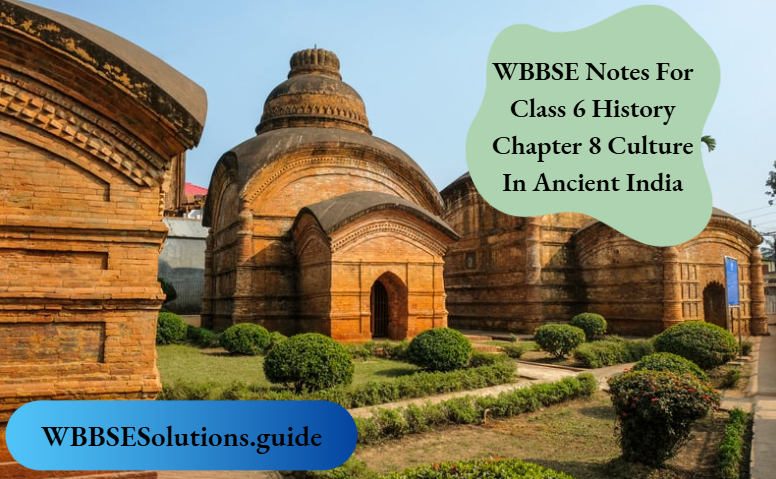
A Buddhist child got an education in Buddhist Vihara or Sangha. A pupil stayed in the Vihara. There were rooms for the pupils. So these Viharas served as schools.
Pupils were given lessons in religion, agriculture, administration, and music. In some Viharas, students were given health education and lessons in social service. Poor students often enjoyed scholarships.
Later on, in the 4th century B.C., subjects of learning included the Vedas, astrology and astronomy, mathematics, and chemistry. The Kshatriyas learned the art of warfare.
“culture in ancient India WBBSE class 6 history”
The Vaishyas and Shudras were given lessons in agriculture, trade, and animal husbandry. Thus education often was linked with livelihood. In all kinds of workmanship and artistic work, one had to learn from an expert.
In this age also, the pupil stayed with the expert in the latter’s house. In the Gupta period, the picture changed a little. Schools and institutions grew up. The kings.
Often spent money to set up schools and institutions. Among the subjects taught were Vedic literature, poetics, grammar, astronomy, drama, law, politics, and the art of warfare.
In this age, as in the previous age, education was sometimes linked with the profession. Vocational training was begun in earnest.
Chapter 8 Culture In Ancient India About Nalanda
Nalanda was an ancient Buddhist educational institution situated in Bihar near Rajgir. We do not know who was its founder. Buddhist scriptures, grammar, and medicine were some of the subjects taught here.
There were more than a hundred rooms where teachers taught students who came from different places. Shilabhadra the great scholar was the Principal of Nalanda for some years.
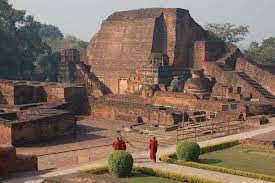
The library housed a huge number of books. There were rooms for students. Learning was free for the students. All expenses were borne by the rulers.
Chapter 8 Culture In Ancient India The Great Vihara Of Taxila Or Takshashila
There were quite a number of Buddhist educational centers. Nalanda was one. Taxila or Takshashila was another. There was a Vihara or Buddhist monastery at Takshashila.
It was the capital of Gandhara mahajanapada, now in Pakistan. Under the Buddhists, the Takshashila monastery became an important center of education. Medical science was the most important subject taught here.
“summary of class 6 history chapter 8 WBBSE”
Students of the age group of 15-20 were admitted. They had their education here for seven or eight years. Education was free. Some of the students who later became famous were Jivaka, Panini, and Chanakya.
Chapter 8 Culture In Ancient India Pursuit Of Literature In Ancient India
No literature is possible without language. For, it is through language that we express what is going on in our minds. We express our feelings in language. The same is true about literature.
Language is the vehicle of literature. There was a time in man’s history when there was no language. Hominids, the pre-modern men, expressed their minds through gestures.
Then with the passage of time, the sounds uttered became organized, and thus language evolved. In our country, the earliest literature was the Rig Veda. It was composed in the early form of Vedic language.
“important questions from culture in ancient India class 6”
The Vedic language changed over time and after a few hundred years it changed its form. This new language had several local variations. People used this both in writing and in speaking.
There was no uniformity anywhere. Then in about the 5th century B.C. Panini a great grammarian wrote a wonderful grammar known as the Ashtadhyayi. It had eight chapters.
Panini tried to effect a reform in the language by removing all local variations and by correcting the flaws. His reforms laid the foundation of great language and literature.
Since then the language which he reformed became known as Sanskrit, or as Sanskrit.
Chapter 8 Culture In Ancient India Language Of Ancient India
Sanskrit had a huge volume of literature and for over a thousand years was the principal language of ancient India. But over the ages Sanskrit too underwent changes. Easier forms came into existence.
Two forms used widely in India were Pali and Prakrit. Pali was used by the Buddhists in their literature. Ashoka’s edicts were in Pali. There were several regional variations of Prakrit.
| Class 6 History | Class 6 Social Science |
| Class 6 Geography | Class 6 Science |
| Class 6 Maths | Class 6 Science MCQs |
| Class 6 General Science | Class 6 Maths Solutions |
| Class 6 Geography | Class 6 Hindi |
Both Pali and Prakrit were spoken languages. But they were also used as mediums of literature. The Jains used Pali in their religious texts.
For many years Sanskrit, Pali, and Prakrit were used side by side in literature. The Dharmashastras, the Puranas, Nyayas, etc. were written in Sanskrit.
Kautilya’s Arthashastra too was written in Sanskrit. The two epics, the Ramayana and the Mahabharata were composed in Sanskrit. The Gupta period was famous for Sanskrit literature.
Kalidas was a great poet and dramatist. His Meghaduta, Raghuvamsha and Abhijnana Shakuntab are among his best-known works. Among other famous Sanskrit works are the Buddhacharita by Ashwaghosha, the Puranas, and Smriti Shastras by Vyasa, and Katyayana.
Shudraka and Vishakhadatta were also famous dramatists. King Harshavaradhana was himself a good writer. He wrote three plays in Sanskrit. These were Nagananda, Ratnavali, and Priyadarshika.
Chapter 8 Culture In Ancient India Other Literary Works Of Ancient India
Apart from pure literature, books on grammar, dictionaries, medicine, law, etc. were composed in ancient India. Some examples are Amarakosha by Amarasingha, Mahabhashya by Patanjali, Charaka Samhita, and Sushruta Samhita.
“WBBSE class 6 history chapter 8 key points”
Amarakosha is a dictionary of Sanskrit words. It was written not alphabetically as done in modern dictionaries. It was arranged according to subjects. Charaka and Sushruta wrote about diseases and medicines.
Chapter 8 Culture In Ancient India Ancient Language Of South India
A few words must be said about the most ancient language of South India. It is Tamil. Historians have discovered Tamil literature of two thousand years ago. There were held three literary meetings in Madurai.
These were called sangomas. Poets and literary persons came from different places and took part in the sangomas. Thus a kind of literature grew up in the south. It was known as Sangam Literature.
Most of them are lost. But among the collections that still exist are eight collections of poems called Ettutagoi, two long poems called Pattupattu, and a book of grammar called Tolkappiyam.
The Ramayana
We can boast of two great epics. These two are famous worldwide. One is the Ramayana, generally believed to have been composed by Valmiki. It has seven kandas or chapters or cantos.
It is now certain that the first and the seventh Kandas were added later. The Ramayana is the story of Rama, the prince of Ayodhya and son of king Dasaratha.

Rama’s exile, his wife Sita’s abduction by Ravana the king of the Rakshasas of Lanka, Rama’s friendship with Sugriva the monkey-king of Kishkindha, and finally the war with the Rakhshasas are the main themes of Ramayana.
This epic (an epic is a long story in poetry) has 24000 slokas. We do not know for certain when really Ramayana was composed.
The main epic, with the five original Kandas, was probably composed sometime between the 4th century B.C. and the third Christian era.
“art and architecture in ancient India class 6 notes”
The story of the Ramayana is so popular that it has been adapted by many poets in and outside India. There are Ramayanas in Tamil, Telugu, and Hindi. The story was adapted by poets of Malaysia, Thailand, and Indonesia.
The Mahabharata
The Mahabharata is the longest epic ever composed in the world. It is believed to have been composed by Vyasa, also known as Vedavyasa.
It is the story of a great war between Kurus and Pandavas. It contains 18 parvis or cantos. It was probably composed between 400 B.C. and AD 300.
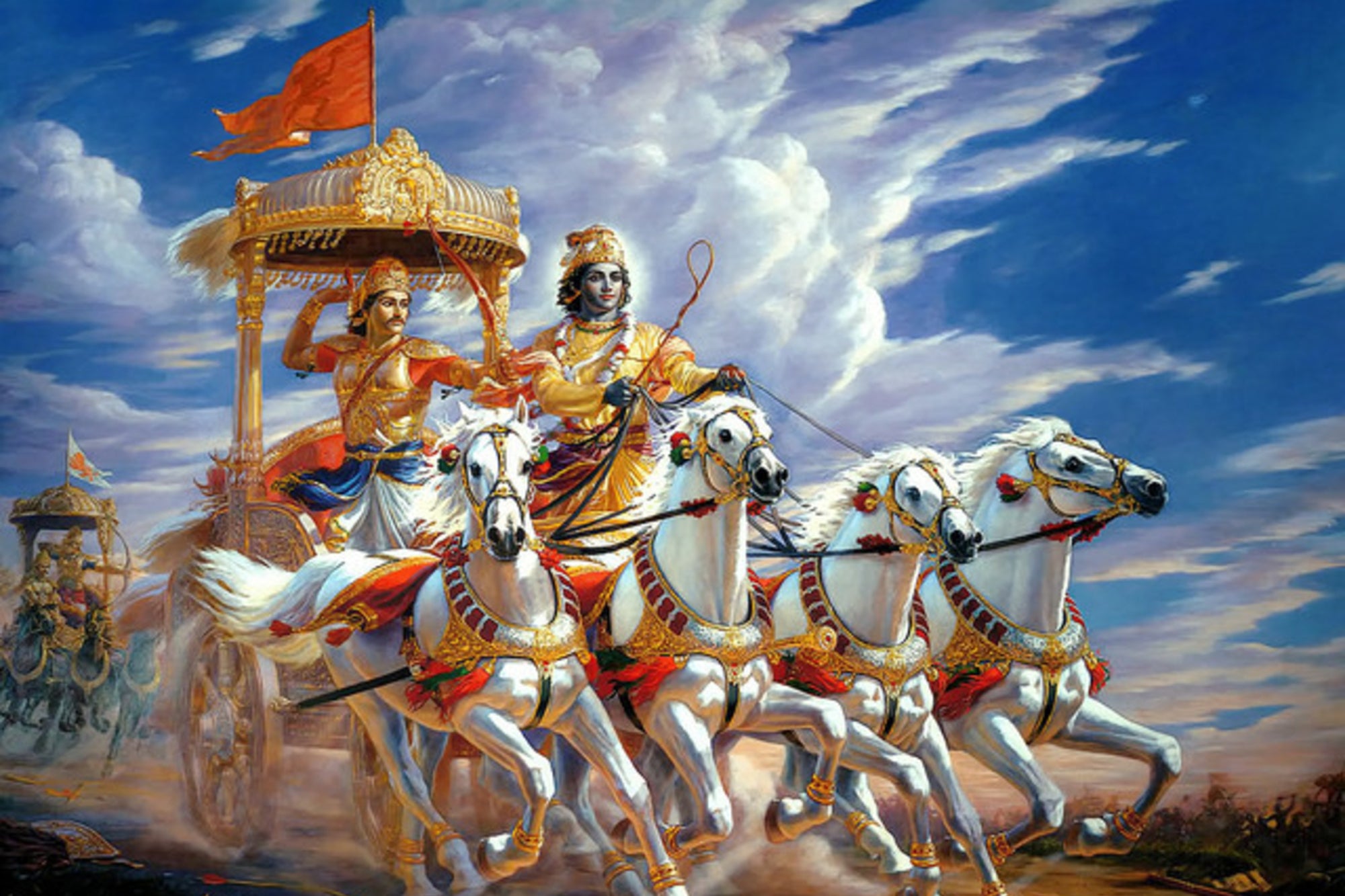
The Mahabharata had originally little over 8000 slokas. Later authors like Vaisampayana added some more. It is certain that this epic was not the handiwork of a single poet.
The great religious text Gita or Srimadbhagabadgita is a part of the Mahabharata. These two epics are not merely poems. They depict the social, economic, political, and military conditions of ancient India.
Chapter 8 Culture In Ancient India Science And Technology In Ancient India
In order to progress, every society needs the application of science and technology. When we study the sky and observe the stars and planets we cultivate science.
When we study the nature or property of mercury in the laboratory we carry out scientific research. The results of scientific investigation are applied in technology.
When we build a bridge or a multi-storied house, we apply our scientific knowledge. Thus both science and technology are important in our life.
“development of literature in ancient India WBBSE”
Primitive men had a sense of science. Otherwise, they could not have been able to make metal utensils or weapons. As time went on, men used their knowledge of science to prepare medicines.
Without knowledge of science, how could Charaka or Sushruta make medicines to cure diseases? The scientific pursuit in ancient India had several aspects.
Medical science, ayurveda, biology, metallurgy (is the science of metals), chemistry, mathematics, astronomy and astrology, agronomy (that agricultural science), architecture, and sculpture are some of the subjects that were cultivated and practiced in different periods of ancient Indian history.
Medical Science
Even as early as in the Vedic age, we hear of medicines and surgery. Buddhist literature to tells us about medicinal herbs and the cure of diseases. Jeevaka was a famous physician of Buddha’s time.
He was born in Rajagriha, modern Rajgir, and went over to Takshashila to study medical science under Atreya. He was the pioneer of Indian Ayurveda, the science of healing and curing diseases with the help of medicinal herbs.
It is said that he cured the diseases of king Bimbisara and Gautama Buddha a number of times. Charaka was a physician in the Kushana period.
“religious beliefs and practices in ancient Indian culture”
His Charaka Samhita is one of the earliest books on medical science. It refers to over seven hundred medicinal herbs. This book also contains methods of treatment of diseases.
Sushruta was a contemporary of Charaka. He also wrote a book known as Sushruta Samhita. Sushruta was an expert in surgery. Religious scriptures often dislike the ways of these physicians.
For the physicians dissected dead bodies as a part of treatment. Preachers of religion sometimes forbade certain food items which the physicians said were highly healthy. Thus there was sometimes hostility between them.
Astronomy and mathematics
The study of astronomy, astrology, and mathematics has a very.. ancient history. These sciences made good progress in the Vedic age. The Vedic people had an interest in the planets and stars.
They invented a very elaborate system of reckoning or counting time. They even made predictions on the basis of the motion or movement of planets.
The division of a year into twelve months and thirty lunar days called tithes was first done in the Vedic age. Both the Jains and the Buddhists were interested in astronomy and mathematics including geometry.
There was good progress of these sciences in the Gupta period. Of course, no difference was made then between astronomy and astrology. Astronomy is the study of planets and stars.
Astrology is mainly interested in foretelling and prediction according to the movement of stars and planets. Aryabhatta was a mathematician and astronomer of the Gupta period. He wrote a book known as Aryabhatiya.
The most important man of science after Aryabhatta was Varahamihira. His books Surya Siddhanta and Pancha Siddhantika describe many important facts of meteorology.
His studies regarding rainfall and earthquakes are very important and epoch-making.
Metallurgy and mineralogy
Metalwork made good progress in ancient India. Weapons made of metals were used abundantly. This was possible because ancient people knew about melting and molding metal.
Gold, silver, bronze, and copper were used in making coins. The art of minting and stamping metal in making coins improved as time went on. Making metal figures was very common too.
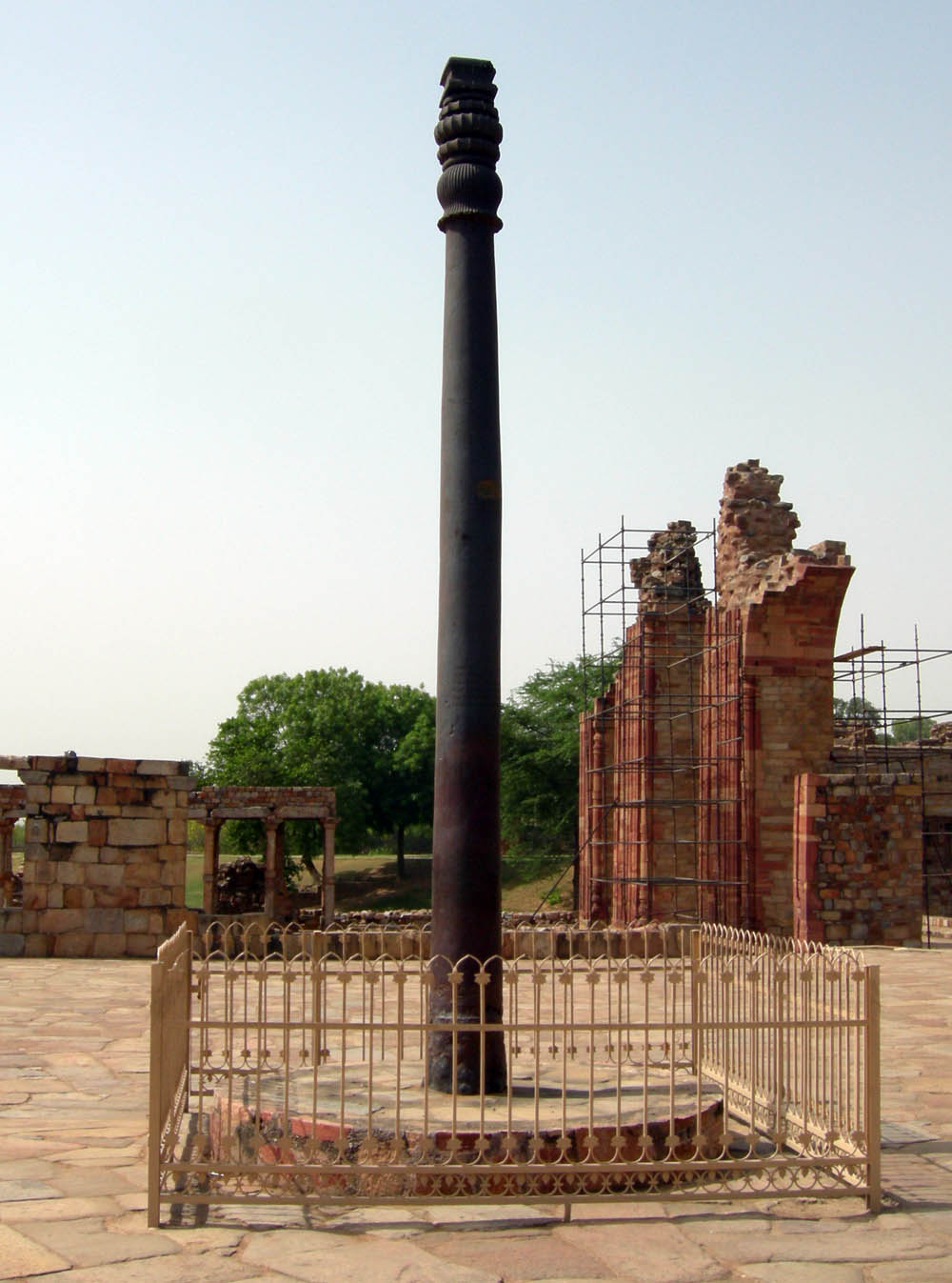
The iron pillar of Mehrauli is an example of excellence in metalwork. Even after more than two thousand years, the Mehrauli iron pillar bears no rust.
This is wonderful. It is certain that ancient people had a good knowledge of chemistry. For, without a knowledge of chemistry melting of metal and stamping coins could not have been possible.
That ancient Indians used gold, copper, and silver ornaments proves that mineralogy too made good progress.
Chapter 8 Culture In Ancient India Art And Artistry In Ancient India
Even primitive men had a sense of beauty. They drew pictures on the cave walls and often painted the walls colorfully. Religion was a motive force behind ancient Indian architecture and sculpture.
Of course, non-religious art was not rare. In fact one of the first architectural works was non-religious. The brick buildings of Harappa give us an idea of the earliest architecture.
Architecture and sculpture often went together or side by side. (Architecture is the art and practice of making buildings and sculpture means the art of making figures of stone and metal etc.)
In the beautiful buildings and palaces stone and metal figures of men and gods are often carved delicately.
Mauryan art
In the Maurya age brilliant pillars and columns show how expert the artisans and craftsmen were. The sculptural works of the Maurya period show the influence of Persian and Greek art.
The Maurya kings were kind enough to build cave dwellings for the Ajivikas. These are examples of the Mauryan art of building-making. The stupas of the Maurya period were begun as burial mounds.
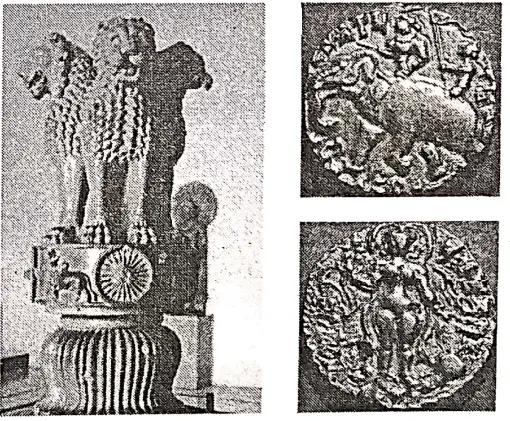
The earlier stupas were mud-built. Later came brick-built stupas. The stupas of Sarnath and Sanchi are very famous and are intact even today.
The pillars of Asoka are another example of Mauryan art. Most of these pillars bore his advice and instructions. The pillars were carved out from a single block of stone.
Most of these pillars had figures of animals like lions, elephants or bulls at the top. The Ashoka pillar of Sarnath is an example.
Art in the Sunga-Kushana-Satavahana ages
The age of the Sungas and Kanvas was a glorious chapter in the history of art and architecture. Art and culture in the Mauryan period depended mainly on the help and patronage of kings.
But in the Sunga-Kanva period, the artists were free to pursue their art. All art bears the life and condition of the common people. Of course, art in this period had a close relationship with religion.

Of the architecture of this period, the most important are the stupas, chaityas, and viharas. Most of them were built by Buddhists and some too by Jainas.
The Bharhut stupa, although almost destroyed, was the most important piece of architecture of this period. The Sanchi stupa of Ashoka was reformed and stone-built in the Sunga period.
The sites of architecture were adorned with stone figures of yakshas, Bodhisatva, kings, animals, flowers, etc. In the Kushana period too architecture and sculpture made great progress.
“growth of education and learning centers in ancient India”
Kanishka was a patron of art. And under his rule, many chaityas, stupas, and viharas were constructed by Buddhists. Kanishka’s eagerness was behind the building of the chaitya at Purushpur.
This chaitya was an excellent example of architectural beauty. A new style of sculpture grew up under Kanishka at Gandhara. Numerous stone images of Buddha were carved here.
It is said that the subject of Gandhara sculpture was Indian but the style was partly Greek and partly Roman. The Mathura style of sculpture also grew up in the Kushana age.
It was fully Indian in style. Red limestone was used at Mathura. An important piece of architecture of the Satavahana period was the stupa at Amaravati.
This stupa contains several figures of green limestone. Stupas, chaityas, and viharas were built also at Karle, Nasik, and Nagarjunakonda.
Gupta art
Art, architecture, and sculpture made great progress in the Gupta period. Of course, art was closely linked with religion, as in the earlier periods. Brick, stone, etc.
Were used in Gupta architecture. The most important temples of this period were the Ekalinga temple of Satna and the Dashavatara temple of Deoghar.
The caves of Ajanta are an example of Gupta architecture, Gupta painting, and sculpture all together. These caves were originally used as Buddhist monasteries. Life of people, animals, plants, etc.
were the subject of the Ajanta paintings. The paintings of Ellora and Bagh are also examples of the excellence of Gupta art. The color used in Ajanta and Ellora’s paintings was prepared from the juices of plants, earth, and stone.
The color thus prepared was highly durable and has withstood the press and stress of time.
Ajanta and Ellora
The rock-cut caves of Ajanta in present-day Maharashtra are famous for very colorful mural paintings. Mural painting means wall painting. Ajanta paintings are the best surviving ancient Indian painting.
“impact of culture on daily life in ancient India class 6”
All caves at Ajanta depict Buddhist subjects, mostly the life of Buddha and the Jataka stories. These paintings also depict the life of common people. Plants and animals also are painted wonderfully.
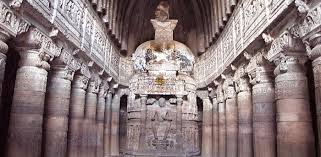
Ellora, also in Maharashtra, is about a hundred kilometers west of Ajanta. There were over thirty caves at Ellora, some Buddhist, some Brahmanical, and a few Jain.
Shudraka
Shudraka is said to have been a king who ruled in the 3rd century A.D. He wrote a drama called Mricchakatika in Sanskrit. Mricchakatika means a toy cart.

This is a drama about a little boy’s demand for a toy very much like the one he saw in the hands of the son of a rich merchant. In the end a kindly person, Basantasena gave away his gold ornaments to make a gold toy cart.
Chandrakelugarh
Recently, relics of an ancient trade center have been discovered at Chandraketugarh in the district of North 24 Parganas. The relics unearthed have been dated between the 6th century B.C. to A.D. 1250.
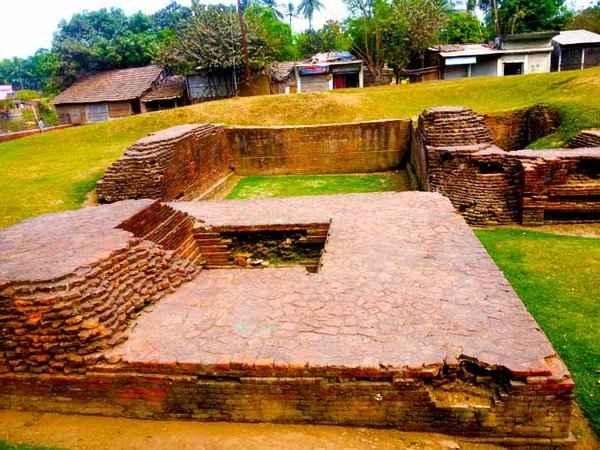
So there is no doubt that Chandraketugarh thrived as a commercial town in the lifetime of Buddha and had a long history of nearly 1500 years.
The relies on found are earthen pots, seals, and figurines, mostly of terracotta and a few metal specimens also.
WBBSE Notes For Class 6 History
-
- WBBSE Notes For Class 6 History Chapter 1 The Idea Of History
- WBBSE Notes For Class 6 History Chapter 2 Primitive Man In The Indian Sub Continent
- WBBSE Notes For Class 6 History Chapter 3 Ancient History Of The Indian Sub Continent
- WBBSE Notes For Class 6 History Chapter 4 Ancient History Of The Indian Sub Continent
- WBBSE Notes For Class 6 History Chapter 5 Indian Sub Continent In The 6th Century BC
- WBBSE Notes For Class 6 History Chapter 6 Expansion Of Empire
- WBBSE Notes For Class 6 History Chapter 7 Economic Condition And Livelihood
- WBBSE Notes For Class 6 History Chapter 8 Culture In ancient India
- WBBSE Notes For Class 6 History Chapter 9 India And The Contemporary World
